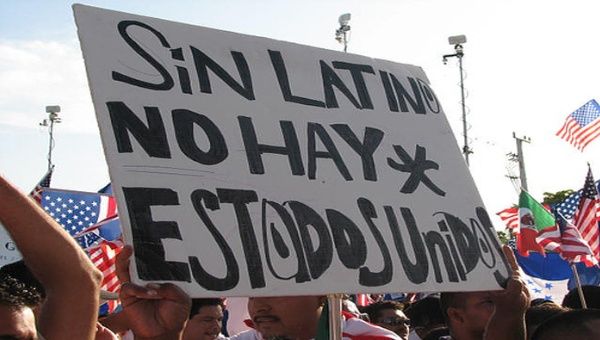The current growth of the Latino population in the United States revealed by the latest Census Bureau report highlights the greater relevance of this population in the design of the country's political and economic scenario.
According to 2020 census figures, Latinos were responsible for 51.1% of the US population growth, that is, with 18.5% of the population in the country. This means that the Hispanic or Hispanic population grew by 23% between 2010 and 2020. In the 2020 presidential election, about 13% of voters were Latino, instead of 7% in the 2000 election.
Hispanic population growth is particularly important in states where Hispanics constitute a relatively high percentage. The largest concentrations of this population are located in southern and western states of the country, such as California, Texas, Florida, New Mexico, Arizona, and Nevada. In particular, states such as New Mexico (49%), Arizona (31%), Nevada (29%), and Florida (26%) have large Hispanic or Latino populations, and are also states that hold great potential for political leanings of any kind of party in the elections.
The Democratic Party has been surprised by the numbers of recent elections, such as the presidential ones, whose Latino’s votes for Republican candidates increased by about 30%. The GOP has been reaching out to Latino voters for decades, especially in Texas, which provides an interesting case in point. In this state, Latinos represent 39% of the population, the second-largest state in the country. Much of the debate among experts today centers on the possibility that traditionally Democratic-leaning Latino Texans could become increasingly Republican.
A national survey published in December last year by
The Wall Street Journal revealed that Latino voters may be evenly divided between Democrats and Republicans: when asked if the midterm elections were today, 37% supported Republican candidates, and the same percentage, 37%, supported Democratic candidates. The undecided amounted to 22% of respondents. If a rematch scenario in the presidential elections in 2024, 44% of these voters would support President Joe Biden, and 43% would support former President Donald Trump. According to the publication, in 2020, Biden won the support of 63% of Latino voters, almost 30% more than Trump.
A
recent Gallup study sought to track the political trends among the adult population in the United States. The results presented were based on aggregated data from all interviews conducted with more than 12,000 American adults, and revealed that political party preferences in the country fluctuated dramatically in the last six months of 2021: “from a nine-percentage-point Democratic advantage in the first quarter to a rare five-point Republican edge in the fourth quarter”. That Republican, five-point lead, “are among the largest Gallup has measured for each party in any quarter since it began regularly measuring party identification and leaning in 1991”.
To answer whether the national context of these numbers reflects in the identification of parties between Latinos or Hispanics, in
another survey “Gallup interviewed 1,338 Hispanic respondents in 2021, and the results show this group followed the same basic trends in party identification as noted nationally, although in a more muted fashion. Hispanic Americans' party identification shifted from a 32-point Democratic advantage from January through June (58% Democrat to 26% Republican) to a 28-point Democratic advantage from July through December (54% to 26%). This reflected a four-point decrease in Hispanic Americans' Democratic identification from the first half of the year to the second half; Republican identification was constant”.
However, the Gallup publication claims that the 28-point Democratic lead among Hispanic adults in the second half does not support a generalization from that poll published in December by The Wall Street Journal. It also adds that the Democratic advantage in party identification among adults in the Latino community in 2021 is greater than in 2011, that is, from 30% to 26%. What there was, according to the publication, was a modest decrease in Latinos or Hispanics in this identification, between 2011-2014, heading towards the Republican Party.
“These results indicate that about half of Hispanic Americans have a weak allegiance to one of the two major political parties -- or no allegiance at all for the 13% who continued to say they are independent even when asked which party they lean toward”.
Thus, the Gallup poll confirms a minor shift in traditionally democratic identity among the Latino community in the country. The data presented is important to understand that there are differences when considering the actual behavior of the subset of Hispanics Americans who are registered and who actually vote, although broader trends show some parallel to voting patterns.
In addition, it is necessary to understand that there may be different political trends in the national comparison relating to individual states and therefore caution is required.
 anred.org
anred.org











